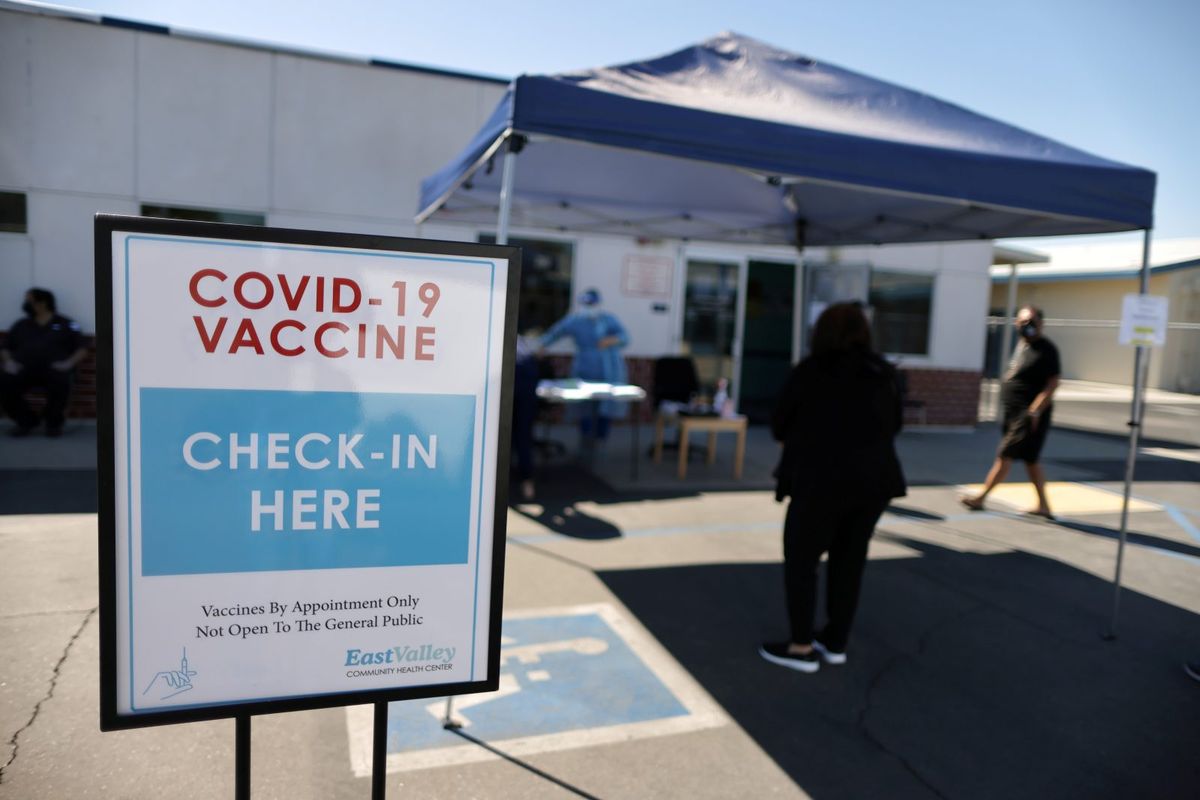It’s been one year since COVID-19 was declared a pandemic. Where are we today?

A few minutes every morning is all you need.
Stay up to date on the world's Headlines and Human Stories. It's fun, it's factual, it's fluff-free.
With vaccines now being distributed, many believe we are now rounding the corner. Yet despite the optimism, public officials are warning that there is still a long way to go before we can return to something resembling normalcy.
In early March 2020, schools and businesses began closing their doors over fears of an uncontrolled outbreak of a lethal new virus.
On March 11, 2020, the World Health Organization (WHO) declared COVID-19 a pandemic. A few weeks later, then-President Donald Trump declared a national emergency, opening up funds and supply chains for the rest of the country. Much of the country then began going into lockdown in an effort to contain the spread.
A year on from the first lockdowns, the country has met many milestones, both positive and negative, but many believe we are now rounding the corner. Despite the optimism, public officials are warning that there is still a long way to go before we can return to something resembling normalcy.
Vaccination updates
Despite seeing some of the highest COVID-19 case numbers in the entire world, the United States has now become one of the most vaccinated countries.
With positivity rates in the first week of March on average around 4.5% in the US, a decline in the number of positive cases both in the US and abroad and three vaccinations approved and now available to the public, initial signs of optimism are beginning to appear among the American public.
So far, inoculations have been distributed to most health care workers, those over the age of 65 and, most recently, teachers. Signs show progress being made as vaccination rates go up, with the Centers for Disease Control and Prevention (CDC) releasing data showing that cases inside long-term care facilities have declined drastically since their peak in December.
Nevertheless, with 92 million doses of the Moderna and Pfizer vaccines administered, fewer than 10% of the total US population has been fully vaccinated. But these numbers are likely to increase dramatically over the coming weeks.
Demand for the vaccine continues to be high, but with the Food and Drug Administration (FDA) issuing an emergency use authorization approving the Johnson & Johnson vaccine – an inoculation that only requires a single, easy-to-store dose – many believe that the US will have more doses than there is demand for within the next couple of months.
Another cause for optimism is the approach American businesses have taken to the vaccine. In what President Joe Biden declared a “wartime effort,” Merck, a competing pharmaceutical company, has come together with Johnson & Johnson to collaborate on the distribution of the Johnson & Johnson vaccine.
This move, along with the use of the Defense Production Act to expedite the material the companies need, led Biden to declare on March 2 that the US was “now on track to have enough vaccine supply for every adult in America by the end of May”
Vaccine skepticism
Despite the optimism, there are still major hurdles the country faces before being able to return to something resembling normalcy.
A Kaiser Family Foundation (KFF) poll released in late February reported strong skepticism among a significant segment of the American population, even after former President Donald Trump encouraged his supporters to “go get your shot” at the Conservative Political Action Conference (CPAC) on February 28.
In the survey, the KFF found that 28% of Republicans said they would “definitely not" get vaccinated and another 18% reported that they would “wait and see” before getting a shot. This data, along with skepticism among Black Americans, has some scientists and health care experts worried that we may not reach herd immunity.
As far as the percentage we need to hit in order to comfortably reach herd immunity, Dr. Anthony Fauci, the nation’s top infectious disease doctor, has a good idea of where we need to be.
“Let’s say we get 75 percent, 80 percent of the population vaccinated,” Fauci said in December. “If we do that, if we do it efficiently enough over the second quarter of 2021, by the time we get to the end of the summer … we may actually have enough herd immunity protecting our society that as we get to the end of 2021, we can approach very much some degree of normality that is close to where we were before.”
At a Massachusetts Consortium on Pathogen Readiness, Harvard Medical School Dean George Daley warned of vaccine skepticism and overconfidence.
“Vaccine mistrust is dangerous, but so is overconfidence,” Daley said. “We need to be wary of the dangers of magical thinking, of seeing vaccines as a silver bullet. Vaccines will not offer an overnight solution. We have to temper our optimism with a dose of reality and brace ourselves for many more months of infection prevention and distancing measures as the vaccines are rolled out.”
Have a tip or story? Get in touch with our reporters at tips@themilsource.com




Comments ()